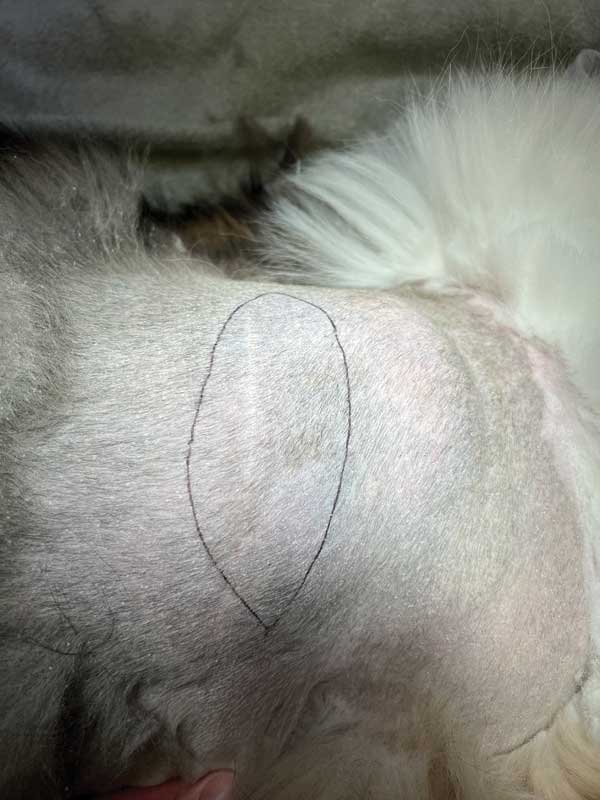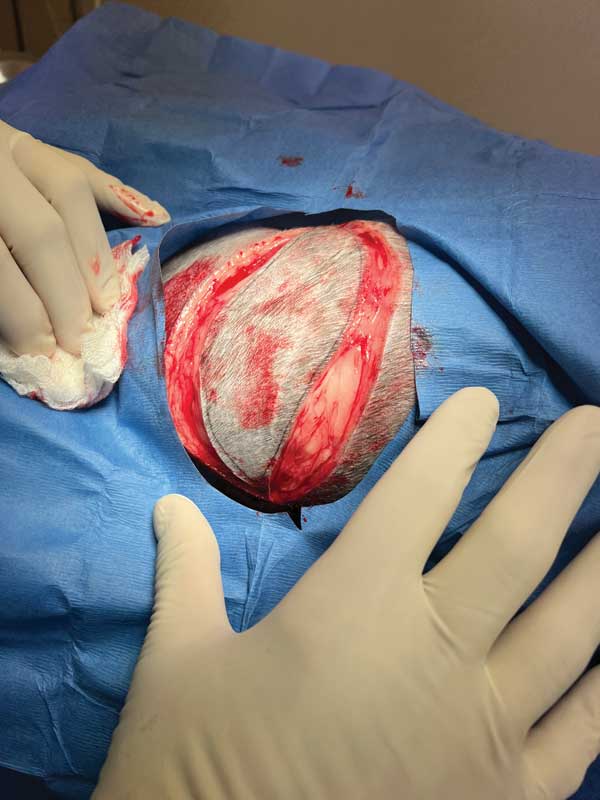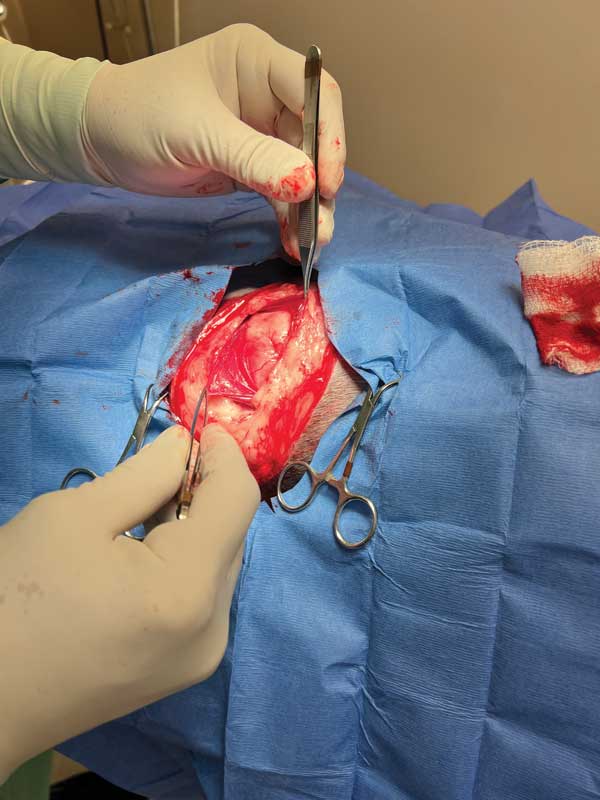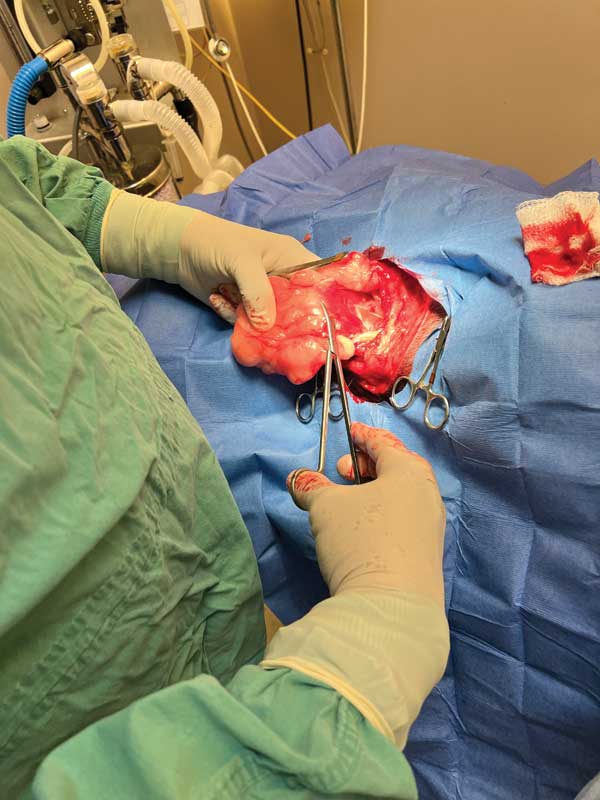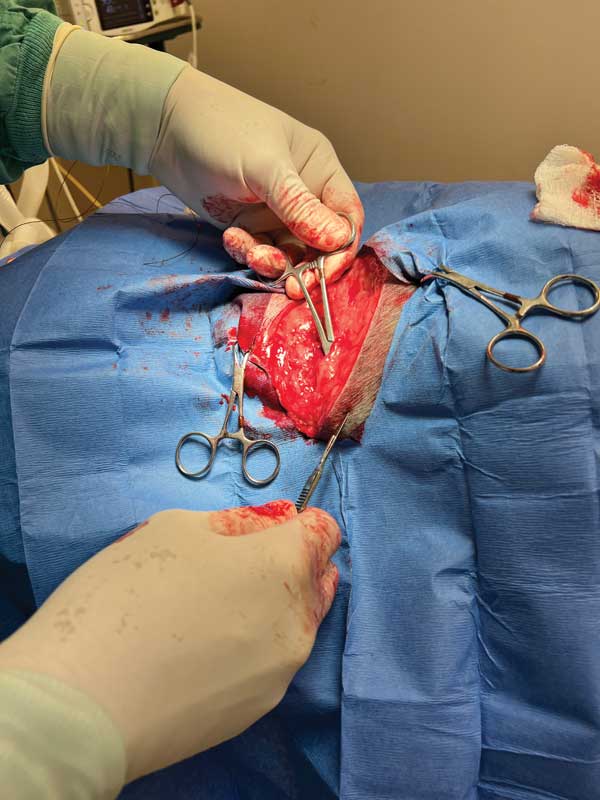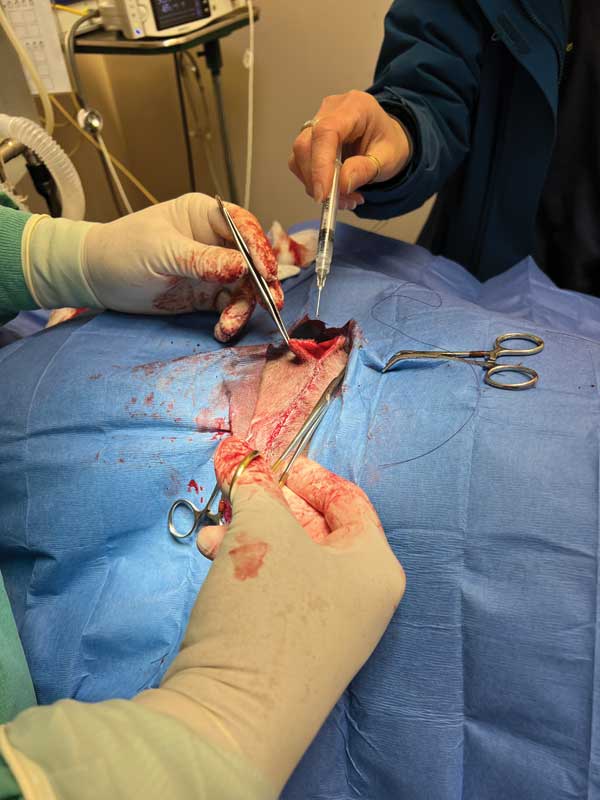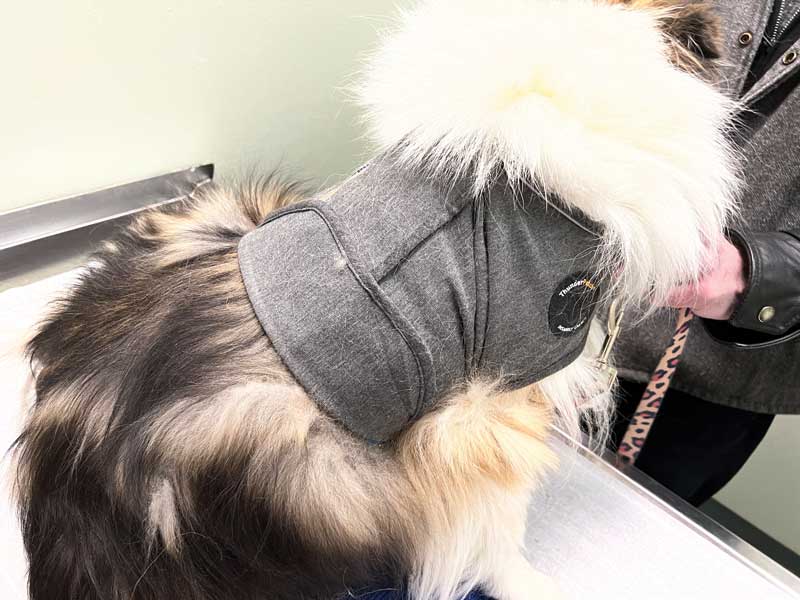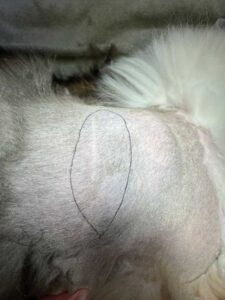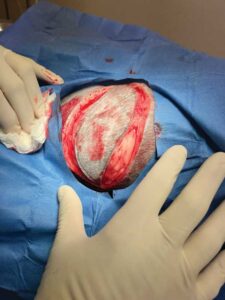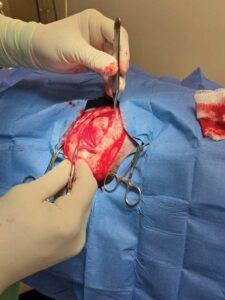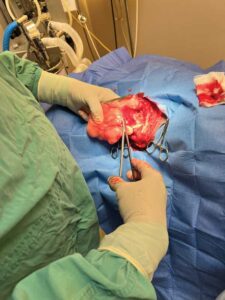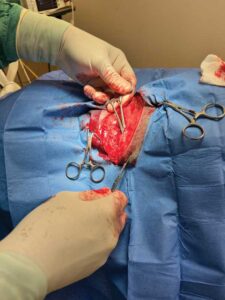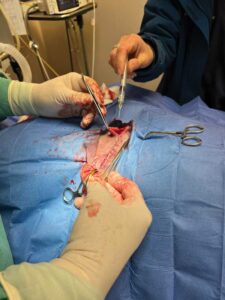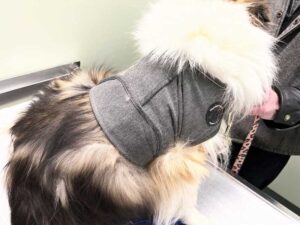I will admit, I used to dread removing thoracic lipomas—sometimes a bloody mess, difficult to access, and, worst of all, comes with
post-operative complications such as seromas, dehiscing, and, of course, having them regrow.
Years of experience has brought me to a point where I no longer worry about removing them. Sure, there are still the occasional problems, but most of them are avoidable, especially when enlisting the client to take responsibility for their pet’s recovery at home.
Before each surgery, I have a discussion about the following things:
- This is not a simple lumpectomy. It takes very careful surgical procedure and aftercare for these to heal without incident.
- Even with the best care, things can and do go wrong, including seroma formation, suture dehiscence, and infection.
- A lipoma can never be completely excised, only debulked. Sooner or later, it will grow back.
The following case is a good example of how to remove a lipoma and set the dog up for a great recovery. I will walk you through all the important steps.
Step 1: Measuring the lipoma
Although you cannot always delineate the edges of lipomas, you want to be able to estimate the size of what you are taking out as well as how much skin is going to be removed.
The area of skin removal is important as you do not want to leave behind loose skin that will only fill with serum
post-operatively.
At this stage, I like to use a marker to line the area of removal, both as a guide once the dog is draped, and as aa aid for introducing the local anesthetic, preferably bupivacaine.
Step 2: Making the incision
I start the incision just outside my mark, and continue around the circumference of the marked off area. At this point, you will want to ligate any major bleeders.
Step 3(a): Using blunt dissection
More often than not, these lipomas are located under the cutaneous trunci muscle. Carefully use blunt dissection techniques until you reach this muscle layer. Perform a blunt dissection on the muscle in the direction of the muscle fibers to preserve as much of the muscle as you can. I use a finger to blunt dissect around the lipoma. This is easier to do in more mature lipomas, as the outer edges of fat become compressed in a pseudo capsule. I find I can free up around 80 percent or more of most growths this way.
Step 3(b): Doing a scissor dissection
Some parts of the lipomas will have other tissue within it, requiring some sharp dissection. Sometimes it is nothing more than fascia that can be trimmed away. Other times it is muscle or blood vessels that need to be carefully dissected out of the way; and in the case of blood vessels, ligated. Once this stage is completed, the entire mass can be lifted out
and removed.
Step 4: Drain placement
A Penrose drain can be both your friend and enemy. It is your friend in that it can help drain any potential spaces left behind. It can also be a source of infection, frequent bandage changes, and if the dog manages to pull it out, then it is no longer there to do its job and a seroma may form.
If I feel I can adequately close down dead space with my dissolvable sutures, I opt not to put in a drain. However, if you feel you need one, always remember to tunnel under the skin with a longer instrument, such as a hemostat, and then make an incision through the skin against the tip of the forceps. Then, pull the drain back to the deepest point of the incision. In this case, I did not place a Penrose drain, but you can see the placement technique.
Step 5: Closure
This is probably the most important part of the procedures in order to have a good outcome. You will want to carefully close every layer of fat, fascia, and muscle, backing your way out of the incision. This minimizes seroma formation. I also like to do a bupivacaine splash within each layer as I close, to minimize post operative pain.
Pay careful attention to the total dose of local anesthetic you use, substituting lidocaine if you are reaching the maximum dose of bupivacaine. You can see here my nurse splashing a local before closure of my final layer.
Step 6: Post-op
I have never had great luck using calming wraps in animals, but they are great for providing compression in the post-operative patient. It is best to have the owner buy the shirt prior to coming in for the surgery, so you can demonstrate how you want them to put it on and take it off.
If there is a Penrose drain, clients will need to remove the shirt several times a day to check the bandage and change it as needed. If there is no drain, the owner will still need to take the shirt off once a day to inspect the incision for any adverse issues, such as infection.
I leave the sutures in for a total of 10 to14 days as the thorax (or any other mobile area) may slow incision healing. At the end of that time, the incision should be completely healed with no sign of seroma formation. The dog should continue to wear the calming wrap for at least an additional week, as it takes three full weeks to get 85 percent of tissue healing in.
Lipoma removal over mobile areas should not be feared: Following these simple instructions will give you great results every time.
Michael Petty, DVM, is a graduate of the veterinary school at Michigan State University. As the owner of Arbor Pointe Veterinary Hospital and the Animal Pain Center in Canton, Michigan, Dr. Petty has devoted his professional life to the care and well-being of animals, especially in the area of pain management. Petty is the past president of the International Veterinary Academy of Pain Management. A frequent speaker and consultant, he has published articles in veterinary journals and serves in an advisory capacity to several pharmaceutical companies on topics of pain management. Petty has been the investigator/veterinarian in 12 FDA pilot and pivotal studies for pain management products. He has lectured both nationally and internationally on pain management topics.

